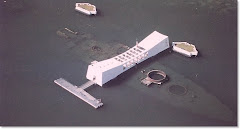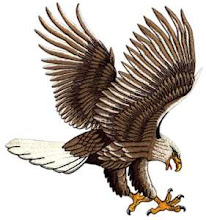



Frank Woodruff Buckles’ life spanned the awesome, horrible, fantastic, dreadful Twentieth Century. He saw and experienced much. As America’s last surviving veteran witness to the First World War, his life experiences and perspective are an artifact in our day which often lacks perspective. Frank’s story, in his own words:
The Beginning
I was born on my father’s farm north of Bethany in Harrison County, Missouri, on 1 February 1901. My father retired in 1905 and bought property in the small town of Coffey, where I started school. In 1910, he bought a farm in Vernon County, near Walker, Missouri, where we enjoyed country living. In December 1916, we moved to Dewey County, Oklahoma, near Oakwood. I was 15 at the time, and I accompanied a boxcar load of draft horses and equipment to the farm. I knew that my father was planning to arrange for a man to take the horses to Oklahoma. He would be paid $20 and transportation back to Missouri. I asked my father if I could do the job, and he agreed. My parents came later by automobile.
In the charming little frontier town of Oakwood, population 300, I worked at the bank, lived at the hotel, and went to high school. On 6 April 1917, the United States entered the Great War and patriotic posters appeared in the post offices.
Enlistment
When summer vacation came, I was invited to the Kansas State Fair in Wichita. While there, I went to the Marine Corps recruiting office to enlist. I said that I was 18, but the understanding sergeant said that I was too young; I had to be 21. I went to Lamed, Kansas, to visit my father’s mother who was living with my aunt and uncle who owned a bank in Larned. A week later, I returned to Wichita and went to the Marine recruiting station. This time I stated that I was 21. The same sergeant gave me a physical examination, but kindly told me that I was just not heavy enough. I tried the Navy and passed the tests, but they were perhaps suspicious of my age and told me that I was flat-footed.
I decided to try elsewhere, so I went to Oklahoma City. There I had no luck with either the Marines or the Navy. I then tried the Army, but was asked for a birth certificate. I told them that the public records were not made of births in Missouri at the time I was born, and my record would be in the family Bible. They accepted this and I enlisted in the Army on 14 August 1917. Thirteen of us were accepted at the recruiting station and given rail tickets to Fort Logan, Colorado, where those who were accepted were sworn into the regular U. S. Army. My serial number was 15577.
In choosing the branch of the Army in which to serve, the old sergeant advised that the Ambulance Service was the quickest way to get to France because the French were begging for ambulance services. I followed his advice and was sent to Fort Riley, Kansas, for training and trench casualty retrieval and ambulance operations.
The Great War
The unit that I went overseas with was called the First Fort Riley Casual Detachment, which consisted of 102 men. The ranking officer was a sergeant. I have a photo of this unit taken at Fort Riley.
We sailed from Hoboken, New Jersey, via Halifax, Nova Scotia, in December 1917, aboard the HMS Carpathia, the vessel famous for the rescue of the White Star Liner, Titanic, on 15 April 1912. Some of the officers and crew who made the rescue were aboard the Carpathia and were not averse to describing the rescue.
We docked in Glasgow, Scotland, and our unit continued on to Winchester, England, to await cross-channel shipment to France. A unit of the 6th Marines was operating Camp Hospital No. 35 near Winchester. Our unit was forced to replace the Marines who were sent on to France.
While in England, I drove a Ford ambulance, a motorcycle with sidecar, and a Ford car for visiting dignitaries. Others walked. After some weeks in England, I requested a meeting with the commanding officer of the area, Colonel Jones of the 6th Cavalry. I asked to be sent to France, and he explained to me that he, too, wanted to go to France but had to stay where he was ordered.
I finally got an assignment to escort an officer to France who had been left behind by his original unit. In France, I had various assignments and was at several locations. After Armistice Day I was assigned to a prisoner-of-war escort company to return prisoners back to Germany.
After two years with the AEF (American Expeditionary Force), I returned home on the USS Pocahontas in January 1920. I was paid $143.90, including a $60 bonus.
Returning Home
I went home to visit my parents, then decided to get a quick education in shorthand and typewriting at a business school in Oklahoma City. After four months of school, I got a job at the post office, working 4:00 p.m. to midnight. I was paid 60¢ an hour. In one month, I had enough money to take the train to Toronto, Ontario, Canada, where I got a job in the freight soliciting office of the White Star Line Steamship Company. I also had a night job with the Great Northwest Telegraph Company.
During the winter of 1921, I went to New York and got a job in the bond department of the prestigious Bankers Trust Company at 5th Avenue and 42nd Street. I used as my reference the Oakwood, Oklahoma, bank where I had worked at age 15.
The steamship business had more appeal for me, but first I had to have some experience at sea. I got my first sea job with the old Munson Line as assistant purser of the ship, Western World, bound for Buenos Aires. I spent several years with the Grace Line, in both cargo and passenger ships on the west coast of South America, where an intimate knowledge of the countries and language was required.
World War II
In 1940, I accepted an assignment to expedite the movement of cargoes for the American President Lines in Manila. Unfortunately for me, my stay was extended by the Japanese invasion of the Philippines in 1941. I spent three-and-a-half years in Japanese prison camps at Santo Tomas and Los Banos. We were rescued by the 11th Airborne Division on 23 February 1945.
Home Again
Life in San Francisco was pleasant after World War II. On 14 September 1946, I married Audrey Mayo of Pleasanton, California. She was born on a ranch, and my people were landowners and farmers for generations, so we decided it was time to give up foreign assignments and come back to the land. We came to Gap View Farm near Charles Town, West Virginia, in January 1954, to reside in the area where my forefather, Robert Buckles, his wife, and 15 other families settled in 1732.
Frank Buckles continued to work on his farm and, up until the age of 106 still drove his tractor. His wife Audrey has passed and Mr. Buckles lived with his daughter, Susannah near Charles Town, West Virginia, until his death at the age of 110.



